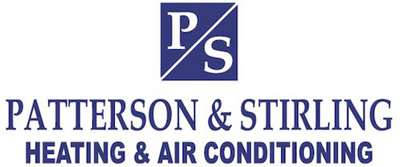Everyone’s always looking to save money on their utility bills, but it turns out there’s a way to lower energy use, even when you’re not even home.
The key is your thermostat. By using automatic schedules, you can structure its daily schedule around your personal preferences. You can create a number of automated temperature settings for when you’re home, away or even when you’re sleeping.
With a few simple adjustments, you can enjoy comfy temperatures while also keeping more of your money. Check out our guide on how your thermostat can save you money in the summer:
While at Home
Whenever you’re at home, you want to enjoy a comfortable temperature. It’s only natural to want your thermostat lower in the summer while inside to appreciate the cool air.
But the most energy-efficient temperatures for the summer is usually between 78 and 80 degrees Fahrenheit. This way, you’ll keep cool while still keeping your energy bills low.
While Gone
When it comes to setting the temperature for a vacation or other trip away from the house, it’s advantageous to set the thermostat higher for while they’re gone.
If your home is located somewhere a little cooler, you can set the temperature as high as 88 degrees while no one is home before you adjust it back to the sweet spot of 78-80 degrees when you or a family member return. This way, your air conditioning system isn’t working around the clock to provide cooling for a bunch of empty rooms.
While Sleeping
For a full night’s rest during summer weather, you want your thermostat set at a comfortable temperature. A good rule of thumb is between 68-72 degrees Fahrenheit. This will keep you from getting too hot or too cold when you are trying to get some rest.
Additional Ways to Reduce Energy Use:
- Smart thermostat installation: Trying a smart thermostat in the summer can lower energy costs by automatically adjusting to your lifestyle and home environment. They can lower the temperature while you are home or sleeping, while allowing it to warm up when no one is around. Using reputed brands and models such as the Lennox iComfort, you are able to adjust settings and schedules through your smartphone, tablet or laptop. Planning smart thermostat installation in your Erie home can be the simplest strategy for maintaining comfortable, yet energy-efficient temperatures even when you aren’t home.
- Upgrade your HVAC system: Upgrading your HVAC system is another great option for long-term energy savings. By investing in a more energy-efficient system, lower utility bills won’t be far behind since it requires less energy to reach your preferred temperatures. Air conditioning installation in Erie is a breeze for experienced professionals like Patterson & Stirling.
- Schedule annual AC maintenance: Whether or not you keep up with regular air conditioning maintenance in Erie can have a big impact on your monthly energy use. If you stay on top of cleaning key components like the coils, checking for damage and clearing air vents of dust and debris, you may notice your HVAC system perform better during day-to-day use.. Increasing efficiency also limits strain on key parts and lowers operational costs, leading to lower energy usage, which translates into lower energy bills.
- Clean or replace the air filter on a regular basis: Cleaning or replacing the air filter regularly saves money by keeping airflow as smooth and consistent as possible. When filters are clogged with dirt and debris, air conditioners have to work harder, and this greater strain could shorten the system’s life span and result in breakdowns.
- Check your attic insulation: Insulation is a vital part of maintaining an energy-efficient home, keeping the hot air outside and the cool air inside during the summer. The North American Insulation Manufacturers Association (NAIMA) offers an official recommendation stating homeowners in souther states should install at least 13-14 inches of insulation, while those in northern U.S. states should have 16-18 inches.
- Check your ventilation: Leaky ductwork can raise your energy bills much more than 20 percent, plus it can potentially allow harmful emissions from your water heater, clothes dryer and other appliances to get into the atmosphere of your home. Checking your ductwork for leaks and sealing them can help with both these issues.
- Seal all other leaky spots in your home: Sealing leaky spots in your home with caulk, foam sealant or weather-stripping helps keep things cooler during those hot summer days. You should also check for any gaps around windows, doors and even outdoor fixtures. Devoting time and effort to sealing leaks now can help you save a lot over time.



